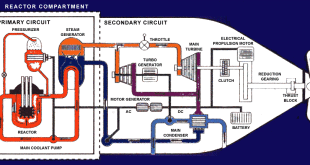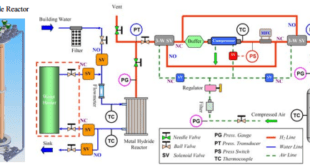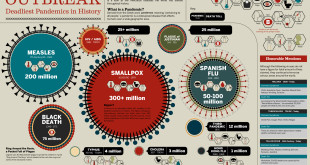A nuclear submarine is a submarine powered by a nuclear reactor. The performance advantages of nuclear submarines over “conventional” (typically diesel-electric) submarines are considerable. Nuclear submarines are more powerful than diesel-powered submarines because nuclear reactors powering them can run for years without the need for refuelling. Nuclear propulsion, being completely …
Read More »Phase Change Materials (PCMs) and Metal Hydride Heat Storage Technology for Directed Energy Weapon Systems
Recent advances of high power solid state lasers promises necessary laser power levels required for the Directed Energy Weapons (DEW) systems. However, inefficiencies of the laser components still generate too much waste heat to be managed by conventional liquid cooling systems, especially in an airborne platform where compactness, light-weight and …
Read More »DARPA RSPACE Autonomous and Resilient command and control for Air Mission Planning under contested environment
Air Force officers in charge of creating air tasking orders have long developed mission plans at air operations centers, known as AOCs, or centralized hubs in a specific command. In future conflicts U.S. forces may face degradation or denial of critical communications capabilities essential for coordination and shared situation understanding. …
Read More »Predicting, eliminating and mitigating the impact of increasing disease outbreaks due to pandemics such as dengue and zika are national security priorities
From Ebola outbreak in West Africa to the most recently, the rapid spread of Zika has shown that even with all advances in modern medicine we are still not completely safe from pandemics. These epidemic of infectious diseases can spread quickly through human populations across a large region several continents, …
Read More »Memcomputing to accelerate deep learning and Space-based Intelligence, Surveillance, and Reconnaissance
By 2020, there are expected to be more than 200 billion interconnected devices within the Internet of Things framework – these will generate an incredible amount of data that will need processing. Traditionally, the processing of data in electronics has relied on integrated circuits (chips) featuring vast numbers of transistors …
Read More »Researchers use Graphene for miniature inductors enabling Ultra-Miniaturized Electronics Devices
The inductors along with capacitors and resistors, inductors are one of the three passive elements that are the foundations of all electronics. An inductor works by inducing a magnetic field as an electric current flows through its coil of wire. This magnetic field temporarily stores electric energy as magnetic energy, …
Read More »US Army’s Warfighter Network (WIN-T) provides high-speed, high-capacity and secure reliable voice, video and data communications anytime, anywhere without the need for fixed infrastructure
Today’s soldiers expect to have network access anywhere, anytime. With the Warfighter Information Network-Tactical (WIN-T), enables mission command and secure reliable voice, video and data communications on-the-move anytime, anywhere without the need for fixed infrastructure. First deployed in Iraq in 2004, WIN-T meant soldiers “had a high-speed, interoperable voice …
Read More »Neutron Beams can detect Nuclear Warheads and disable them
Despite making reductions in their arsenals, both the USA and Russia have extensive and expensive programmes under way to replace and modernize their nuclear warheads, missile and aircraft delivery systems, and nuclear weapon production facilities. The Nuclear Race between US, Russia, and China through their continuous modernization of all the …
Read More »Militaries developing Vehicle mounted Lasers Directed Energy Weapons to counter swarm of Drones , C-RAM (Counter Rocket, Artillery and Mortar) and subsonic cruise missiles
The drones have emerged as a major new threat to civilian infrastructure and military. The militant organizations have started employing drones to further their terrorism. Jihadi groups fighting the Syrian government – most notably ISIS and Jabhet al-Nusra – are extensively using advanced drones to pinpoint the Syrian Army’s locations, …
Read More »DARPA’s Safe Gene editing program developing tools to prevent Global Bioterrorism and Biowarfare threat
Gene editing technologies have captured increasing attention from healthcare professionals, policymakers, and community leaders in recent years for their potential to selectively disable cancerous cells in the body, control populations of disease-spreading mosquitos, and defend native flora and fauna against invasive species, among other uses. The potential national security applications …
Read More » International Defense Security & Technology Your trusted Source for News, Research and Analysis
International Defense Security & Technology Your trusted Source for News, Research and Analysis









